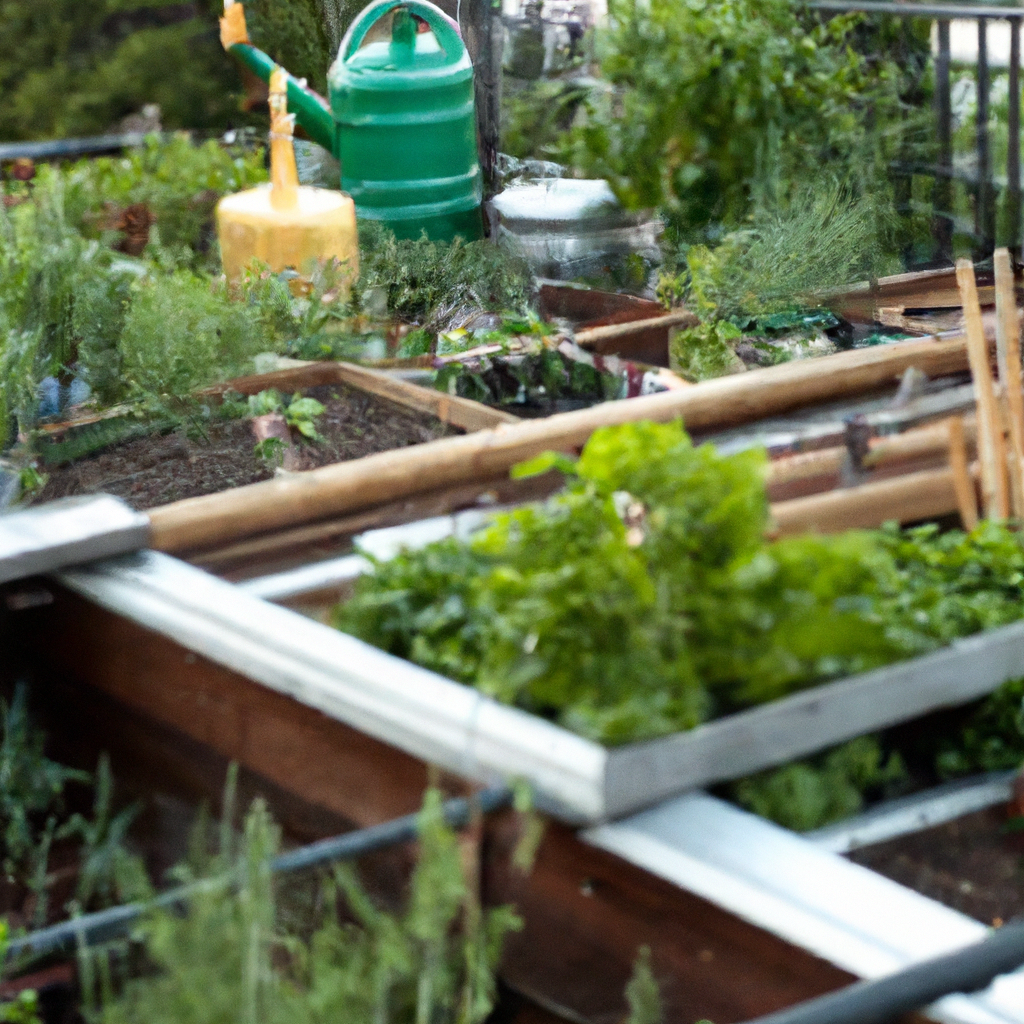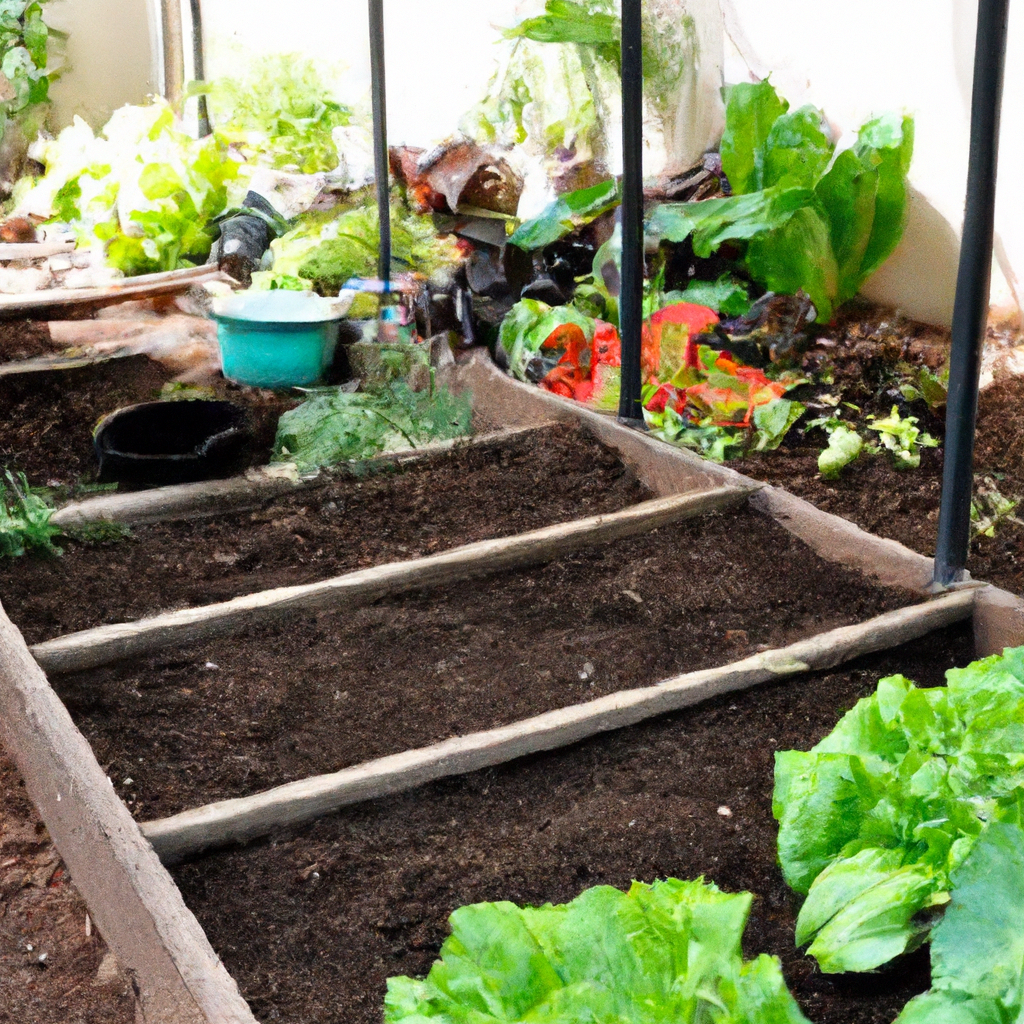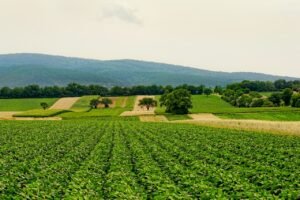
Have you ever thought about the potential for agriculture in the middle of a bustling city? Well, it turns out that urban farming is not only possible but also thriving in the concrete jungle. From rooftop gardens to vertical farms, individuals and communities are finding innovative ways to cultivate fresh produce in urban environments. In this article, we will explore some inspiring success stories of urban farming and how it is transforming our cities into vibrant and sustainable food sources. So, get ready to be amazed by the power of nature’s resilience and human creativity as we journey into the world of urban farming!

Benefits of Urban Farming
Improving food security
Urban farming plays a crucial role in enhancing food security in urban areas. By cultivating fresh produce within the city limits, urban farmers can provide a local and reliable source of nutritious food for the community. This reduces the dependency on distant farms and minimizes the risk of food shortage during times of crisis, such as natural disasters or disruptions in the transportation system. Additionally, urban farming allows for a diverse range of crops to be grown, ensuring a variety of fresh produce is available, thus promoting a healthy and balanced diet for the urban population.
Creating green spaces
One of the remarkable benefits of urban farming is the creation of green spaces within densely populated cities. These farms, whether in the form of rooftop gardens, community gardens, or vertical farms, bring a breath of fresh air and natural beauty into the concrete jungles. They provide an aesthetically pleasing environment that helps combat the negative impacts of urbanization, such as air pollution, noise, and stress. These green spaces also contribute to urban biodiversity, providing habitats for various species of birds, insects, and plants, thus promoting a more balanced and sustainable urban ecosystem.
Reducing food miles and carbon emissions
Urban farming significantly reduces the distance food needs to travel from farm to plate, thereby reducing food miles and associated carbon emissions. Traditional agriculture often involves long transportation routes, which consume vast amounts of fuel and contribute to greenhouse gas emissions. However, urban farms are located within or near urban centers, allowing for a more direct and efficient distribution of fresh produce to local consumers. By minimizing the need for long-distance transportation, urban farming helps reduce carbon emissions and lessen the environmental impact of the food production system.
Challenges Faced by Urban Farmers
Space limitations
One of the primary challenges faced by urban farmers is the limited availability of suitable land. Urban areas are often characterized by a scarcity of open spaces and high land prices, making it difficult for farmers to secure adequate plots for cultivation. However, innovative farming techniques such as vertical farming and rooftop farming provide solutions to overcome these space limitations. By utilizing unused vertical space or converting rooftops into productive farming areas, urban farmers can maximize their growing areas and overcome the constraints of limited land availability.
Access to resources
Another significant challenge faced by urban farmers is the limited access to essential resources, such as water and sunlight. Urban environments often lack a natural and consistent supply of water, posing difficulties for irrigation. However, with the adoption of innovative techniques like hydroponics and aeroponics, urban farmers can minimize water usage and efficiently deliver nutrients to the plants. Similarly, the limited availability of sunlight in densely populated areas can be addressed through the use of artificial lighting systems, ensuring optimal growth conditions for the crops.
Zoning and legal restrictions
Urban farming is often subjected to zoning and legal restrictions imposed by local authorities. These regulations may limit the types of crops that can be grown, the size of the farming operation, or the use of certain farming techniques. While these restrictions are in place to ensure public safety and maintain the integrity of urban areas, they can pose challenges for aspiring urban farmers. Therefore, it is crucial for urban farmers to work closely with local authorities, advocate for supportive policies, and engage in community discussions to overcome these barriers and create an environment conducive to urban farming.

Innovative Techniques for Urban Farming
Vertical farming
Vertical farming is an innovative technique that involves the cultivation of plants in vertical stacks or towers, maximizing the use of vertical space. By utilizing hydroponic or aeroponic systems, crops can be grown without the need for soil, making it an ideal solution for urban environments with limited land availability. Vertical farming allows for high-density cultivation, increased crop yield, and reduced water usage compared to traditional farming methods. It also offers precise control over the growing conditions, including temperature, humidity, and lighting, resulting in optimal plant growth and improved resource efficiency.
Hydroponics
Hydroponics is a technique of growing plants without soil, where the plants are instead placed in a nutrient-rich water solution. The roots receive the necessary nutrients directly, promoting faster and healthier growth. Hydroponics uses significantly less water compared to traditional soil-based farming, as the water is recirculated and reused within the system. This efficiency, coupled with the ability to grow crops throughout the year in controlled environments, makes hydroponics an ideal choice for urban farming. It allows for the cultivation of a wide range of crops, from leafy greens and herbs to fruits and vegetables, providing urban dwellers with fresh and locally grown produce.
Aeroponics
Aeroponics takes urban farming to new heights by growing plants in a misty environment without the use of soil or water. In this technique, plant roots are suspended in the air and periodically misted with a nutrient-rich solution. This method provides enhanced nutrient absorption, fast growth rates, and reduces water usage compared to hydroponics. Due to the minimal use of resources and precise control over the growing conditions, aeroponics has gained popularity in urban farming. It allows for the cultivation of a wide range of crops, even in limited spaces, making it an excellent choice for urban farmers looking to maximize productivity while minimizing resource consumption.
Recycled water systems
Water scarcity is a significant concern in urban farming, given the limited availability of freshwater resources. To address this issue, recycled water systems are implemented, where wastewater from urban areas is treated and reused for irrigation purposes. This approach not only conserves water but also reduces the strain on freshwater sources. By utilizing advanced filtration and purification methods, recycled water can be made safe and suitable for hydroponic or aeroponic systems. Implementing recycled water systems in urban farming not only promotes sustainable water management but also helps minimize the environmental impact of traditional agricultural practices.
Integration of Technology in Urban Farming
Smart farming
The integration of technology in urban farming has led to the emergence of smart farming techniques. Smart farming combines data analytics, automation, and sensor technologies to optimize crop production and resource management. Sensors placed in the soil, plants, or farming equipment can collect real-time data on moisture levels, nutrient content, temperature, and other environmental parameters. This data is then analyzed to provide precise insights on crop health, irrigation needs, and optimal growing conditions. By leveraging technology in this way, urban farmers can maximize efficiency, reduce resource waste, and increase overall crop yield.
Internet of Things (IoT)
The Internet of Things (IoT) has revolutionized urban farming by connecting various devices, sensors, and systems to a network, enabling seamless data exchange and automation. IoT applications in urban farming include smart irrigation systems that adjust watering schedules based on real-time weather data, automated climate control systems that regulate temperature and humidity inside greenhouses, and remote monitoring systems that provide real-time updates on crop health and growth. By harnessing the power of IoT, urban farmers can achieve precise control over their farming operations, improve resource efficiency, and ensure optimal growing conditions for their crops.
Data-driven farming
Data-driven farming leverages the vast amount of data collected by sensors, drones, and other smart farming technologies to make informed decisions and optimize farm management practices. By analyzing historical and real-time data on factors such as climate, soil conditions, crop growth, and market demand, urban farmers can identify patterns, predict outcomes, and adjust their farming strategies accordingly. This data-driven approach enables farmers to optimize resource allocation, minimize waste, and respond effectively to changing market conditions. By harnessing the power of data, urban farmers can make their operations more efficient, sustainable, and economically viable.

Community Gardens: Cultivating togetherness
Promoting community engagement
Community gardens serve as focal points for community engagement and social interaction. They bring together people from different backgrounds and age groups, fostering a sense of belonging and togetherness. Urban residents can come together to tend the garden, share knowledge and experiences, and build strong community connections. Community gardens also create opportunities for collaboration and cooperation, where neighbors can contribute to the success of the garden and collectively enjoy the fruits of their labor. By promoting community engagement, urban farming through community gardens strengthens social networks and enhances community resilience.
Educational opportunities
Community gardens provide valuable educational opportunities for individuals of all ages. They serve as outdoor classrooms, where children and adults alike can learn about plant life cycles, sustainable agriculture practices, and the importance of healthy eating. Participating in a community garden allows individuals to develop practical skills related to gardening, from seedling propagation to pest control. By engaging in hands-on activities and observing the growth of their plants, people gain a deeper understanding of the food system and the challenges faced by farmers. Community gardens thus empower individuals to make informed choices about their food and contribute to a more sustainable and resilient urban environment.
Improving mental health and well-being
Engaging in urban farming activities, such as tending to a community garden, has been shown to have positive impacts on mental health and well-being. Gardening provides a therapeutic escape from the stresses of urban life, allowing individuals to connect with nature and experience a sense of tranquility. The physical activity involved in gardening also promotes physical well-being and can contribute to a healthier lifestyle. Furthermore, community gardens create a sense of purpose and accomplishment as individuals witness the growth and harvest of their plants. This sense of achievement and connection to nature can boost self-esteem, reduce anxiety and depression, and improve overall mental well-being.
Urban Rooftop Farming: A new frontier
Optimizing limited space
Urban rooftop farming maximizes the use of limited space by transforming underutilized rooftops into productive growing areas. Rooftops offer an extensive, untouched canvas for urban farmers to cultivate crops without encroaching on precious land. By utilizing innovative farming techniques like vertical farming, hydroponics, and aeroponics, urban rooftop farms can produce a significant amount of fresh produce, contributing to local food security. This utilization of underutilized space not only provides a solution to limited land availability but also helps create greener and more sustainable cities.
Improving energy efficiency
Rooftop farms also have the potential to improve energy efficiency in urban areas. The thermal insulation properties of rooftop gardens help regulate building temperatures, reducing the need for excessive heating or cooling and ultimately lowering energy consumption. The vegetation on the rooftops also acts as a natural barrier against heat radiation, collectively reducing the urban heat island effect. Additionally, rooftop farms can incorporate renewable energy technologies, such as solar panels, to power their operations, further reducing the reliance on non-renewable energy sources. By harnessing the power of rooftop farming, urban areas can become more energy-efficient and environmentally sustainable.
Reducing urban heat island effect
The urban heat island effect occurs when cities experience higher temperatures compared to surrounding rural areas due to the concentration of buildings, asphalt, and reduced vegetation. Rooftop farming plays a vital role in reducing the urban heat island effect by increasing green cover and the overall cooling effect in urban areas. The plants on the rooftop absorb sunlight and convert it into energy through photosynthesis, therefore reducing the amount of heat reflected back into the atmosphere. Rooftop farms also help regulate temperature by evaporative cooling, as plants release moisture into the air through transpiration. By reducing the urban heat island effect, rooftop farming contributes to improved living conditions and a more sustainable urban environment.

Vertical Farming: Growing towards the sky
Utilizing space-efficient designs
Vertical farming maximizes growing space by utilizing innovative designs that allow crops to be stacked vertically. With this approach, multiple layers of plants can be grown in a compact area, significantly increasing crop yield per square foot of land. Plants are typically grown in vertical growing towers or shelves, with each tier equipped with its own lighting and irrigation systems. This space-efficient design enables urban farmers to grow large quantities of fresh produce in a controlled environment while minimizing land usage. Vertical farming allows for year-round production, making it an ideal solution for urban areas with limited space and resources.
Maximizing crop yield
Vertical farming provides optimal growing conditions for crops, allowing farmers to achieve maximum crop yield. By utilizing artificial lighting systems, urban farmers can provide consistent and targeted light to the plants, promoting photosynthesis and growth. Additionally, the controlled environment of vertical farms ensures that crops are protected from pests, diseases, and adverse weather conditions. This precision and control over the growing conditions, combined with efficient resource utilization, result in increased crop productivity throughout the year. Vertical farming allows urban farmers to meet the growing demand for fresh and local produce while reducing the strain on traditional agricultural systems.
Mitigating weather dependency
Vertical farming mitigates the dependency on favorable weather conditions, making it a reliable method of cultivation in urban areas. Traditional agriculture is often vulnerable to extreme weather events, such as droughts, floods, and storms, which can devastate crops and lead to food shortages. However, vertical farms provide a controlled environment where temperature, humidity, and lighting can be optimized to meet the specific needs of each crop. The absence of soil also eliminates the risk of soil erosion and nutrient depletion caused by heavy rainfall. By reducing weather dependency, vertical farming ensures a consistent supply of fresh produce year-round, promoting food security and stability in urban areas.
Hydroponics: Cultivating without soil
Conserving water resources
Hydroponics is a soilless cultivation technique that allows plants to grow directly in a nutrient-rich water solution. This method enables urban farmers to conserve water resources compared to traditional soil-based farming. In hydroponic systems, water is efficiently recirculated and reused, minimizing wastage. The closed-loop nature of hydroponics reduces water consumption by up to 90% compared to traditional farming methods, making it an environmentally sustainable choice for urban agriculture. As freshwater scarcity becomes a pressing concern, hydroponics offers a water-efficient solution to sustainably produce food while minimizing the strain on precious water resources.
Efficient nutrient delivery
Hydroponics ensures efficient nutrient delivery to the plants, resulting in faster and healthier growth. The nutrient-rich water solution in hydroponic systems provides plants with a readily available supply of essential elements, eliminating the need for extensive root systems to seek nutrients from the soil. This efficient nutrient delivery allows plants to allocate more energy towards growth and development, resulting in higher crop yields. Additionally, by precisely controlling the nutrient levels in the water solution, urban farmers can tailor the plant’s nutrient intake to its specific requirements, further optimizing resource utilization and crop productivity.
Year-round cultivation
Hydroponics enables year-round cultivation regardless of external factors such as climate or season. By creating controlled growing environments, urban farmers can recreate the optimal conditions required for plant growth at any time of the year. This means that regardless of temperature fluctuations or changing daylight hours, plants can thrive consistently. Hydroponic systems can be equipped with artificial lighting to maintain optimum light levels, ensuring uninterrupted growth throughout the year. Year-round cultivation not only enhances the availability and variety of fresh produce but also reduces the dependency on long-distance transportation and imported goods, contributing to food security and sustainability in urban areas.

Aeroponics: Growing plants in mist
Reducing water usage
Aeroponics is a highly water-efficient growing technique that involves growing plants in a misty environment without the need for soil or excessive water usage. The plant roots are suspended in the air and periodically misted with a nutrient-rich solution, allowing them to absorb the necessary elements without excessive water wastage. Compared to hydroponics, aeroponics uses up to 95% less water due to its minimal water requirements. By reducing water usage, aeroponics addresses the pressing issue of water scarcity while ensuring the optimal growth of crops in urban areas.
Enhancing nutrient absorption
Aeroponics enhances nutrient absorption by providing plants with a direct and highly oxygenated nutrient mist. The fine mist allows nutrients to reach the roots more efficiently, promoting rapid and efficient absorption. This enhanced nutrient absorption results in faster growth rates and healthier plants. Additionally, by suspending the roots in the air, aeroponics reduces the risk of pathogen contamination or root rot, as the absence of soil minimizes the potential for disease transmission. The enhanced nutrient absorption and reduced risk of plant diseases make aeroponics a highly efficient and sustainable technique for urban farming.
Fast growth rates
Aeroponics promotes fast growth rates in plants due to the optimized growing conditions it provides. By suspending the roots in a highly oxygenated mist, plants receive a continuous and direct supply of nutrients, promoting their growth and development. The absence of soil also eliminates the need for plants to invest energy into extensive root growth, allowing them to allocate more resources towards above-ground growth. As a result, plants grown using aeroponics exhibit accelerated growth rates compared to traditional soil-based farming. The fast growth rates in aeroponics enable urban farmers to achieve higher crop yields within a shorter time frame, making it an efficient and productive urban farming technique.
Conclusion
Urban farming brings a multitude of benefits to city dwellers and the environment alike. Through improving food security, creating green spaces, and reducing food miles and carbon emissions, urban farming contributes to healthier and more sustainable urban environments. Despite the challenges faced by urban farmers, such as space limitations, access to resources, and zoning restrictions, innovative techniques such as vertical farming, hydroponics, and aeroponics offer solutions to overcome these obstacles. By integrating technology and harnessing the potential of community gardens, urban rooftop farming, and vertical farming, the urban farming movement continues to grow and thrive. With the cultivation of crops without soil, urban farmers can conserve water resources and improve nutrient delivery through hydroponics and aeroponics. The adoption of these innovative techniques enhances crop yield, reduces resource consumption, and allows for year-round cultivation in urban areas. As urban farming expands, it promotes community engagement, offers educational opportunities, and improves mental health and well-being. With the shared efforts of urban farmers, policymakers, and communities, urban farming has the power to transform cities into more sustainable, resilient, and inclusive places for all.







